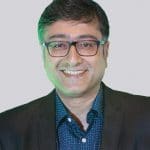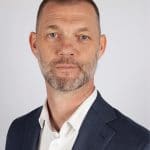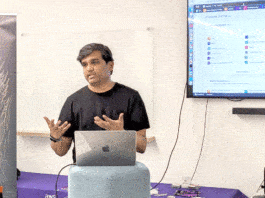With the Indian government and many top industry players adopting open source, it is no longer a buzz word. But what does its future look like? How is open source going to grow in India, and what role does SUSE plan to play in that? To understand this, Ankita K.S. from the EFY Group spoke to Ronald de Jong – president of sales, SUSE; Phillip Cockrell, VP, WW Alliance sales, SUSE; and Rajarshi Bhattacharyya, country manager, SUSE India.
- Phillip Cockrell, VP, WW Alliance sales, SUSE
- Rajarshi Bhattacharya, country manager, SUSE India
- Ronald de Jong – President of Sales, SUSE
Q Why do you call SUSE ‘an open, open source company’?
De Jong: Let me first give you an overview of what we do. We build software for software-defined infrastructure and application delivery. Today, we have operating systems like SUSE Linux Enterprise Server, around which you have all kinds of products like SUSE Linux Enterprise High Availability Extension, SUSE Linux Enterprise Live Patching, SUSE Manager to manage your environment and update your systems, and many more. We also have specific operating systems for points of sale. Moreover, we have products like Private Cloud that is based on OpenStack, Cloud Application Platform that is a PaaS solution based on Cloud Foundry, as well as SUSE Enterprise Storage which is based on the Ceph open source project. So, if you view them all from a software-defined infrastructure perspective, you will see that we have all those elements that you need to have for a complete open source stack. But we are not like other companies that ask you to buy their whole stack. That’s why we call ourselves an open, open source company.
Q What is your strategy when it comes to working with other open source companies?
De Jong: Our strategy is to give specific parts of the stack to other companies to use. This is because a lot of companies already have some of the parts, and we don’t want to make them throw their investments away. We are happy if they want to use our complete stack, but we try to make sure there are no losses. We are working very well with other open source companies. We also welcome other hardware vendors to work with us, because we are not competing with other open source companies that work on middleware and databases. It gets tricky to work together with a company if you are a competitor — that doesn’t happen in our case.
Q How different is India in terms of adopting open source software? Is the scenario changing?
Bhattacharyya: I think that India was a little behind in adopting open source in comparison with other countries, but with government initiatives like Digital India, we are establishing the pillars of infrastructure completely around open source. Right from the software for smart cities to that for access control systems, everything is being developed on open source. Since the past seven years, all the projects developed for service delivery, too, are built on open source. So, prioritising open source is high on the government’s agenda today. Decision makers in the government are also aware enough to understand that they require enterprise-grade open source in order to maintain stability, sustainability and security. So, open source is enabling us to grow very fast.
Q So is India on SUSE’s radar too?
De Jong: Yes, definitely! This is the second time in the past three months that I am visiting India. Since I am responsible for the global operations, I need to prioritise my visits and India tops the list. During my visits, I meet all the systems integrators (SIs), and have discussions with them to understand what they need and how they want to grow further. What other countries need from us is different. Similarly, I can’t tell the team in India how to do business, since I am not part of the culture and I don’t know how the government works here. So, I need to understand and learn what the Indian team members require, and facilitate that as best as possible, so that they can grow. One important discovery was the necessity of training people on new technologies, and we have started working on it.
Q Can you briefly tell us more about these training programmes?
De Jong: We’ve just hired people again and added a team of technical trainers in India, because we think it is important to train our partners as much as possible. We have created courses around all our products, and are donating them to universities and schools so that they can adapt these and learn from them. To implement any programme the right way, you need to have three things in mind. First, you need the content. Second, you need to have a system for learners to obtain the content and make sure that it is always aligned with the newest technologies. Third, if you want to launch it in the market, you need to have proper training for that.
So, that’s where our focus is now. We have trainers who train at the premises of the SIs, partners or schools. We already have two universities that have signed up for our educational programme, and they run SUSE certification courses for their students. The universities, as well as the private organisations, are very keen about such programmes.
Q What were the main challenges faced?
Cockrell: In the past, we had a programme whereby we focused mainly on training the individuals, but of course, with so many people it was very difficult to efficiently train them all. Now we have three specific trainers who constantly focus on creating more trainers within the large systems integrators. We align these training programmes based on the solutions built with the integrator partners, and they train their respective teams on all the components. In the past we were doing more hand-to-hand training, like close combat, but now we take a large strategic view to create more skills in these organisations. The idea is to build the skillsets and make it easier for the end customers to consume these solutions and smoothen the delivery process.
One other challenge we face is that to train on new technologies like OpenStack Cloud, we need bigger laptops with more internal memory and compute power. So, the right set of equipment and software is important. That is on our priority list and we have a separate budget allotted for this to ensure the training is successful.
Q What are the various projects you’re working on for key technologies like digital transformation?
Cockrell: All the pillars of the SUSE product strategy are aligned to digital transformation. For example, in the area of application delivery and development, digital transformation enables developers to innovate on a platform that has the support of all the different scenarios — from use cases to rapid development and to iterating. This really increases the adoption rate. And we have projects with partners and with strategic customers where we are contributing, because it’s also a very new area.
We also have a solution in the market called Cloud Application Platform. This is the Cloud Foundry product and it demonstrates our philosophy of being an ‘open, open source company’. If the customers want just one stack, we containerise Cloud Foundry, and that can then run on top of OpenStack or on any bare metal. So, we can run that on containers that are provided by our partners — examples of this could be Amazon Elastic Container Service for Kubernetes (Amazon EKS) or Amazon Web Services on Azure.
Q What are your hiring plans in India? Are there any hiring trends that you see?
Over the last couple of years, we’ve had 20 to 30 per cent growth in hiring, and we are starting to become bigger and bigger in India. Also, in India, we see that the number of certified people has increased in geometric progression over the last two years. India has a very young population and a very good IT education system. It’s relatively easy to find good developers here, and it is becoming more difficult to find the same talent in Europe or in the US. Therefore, we can tap into India’s local talent pool for our R&D expansion efforts.







